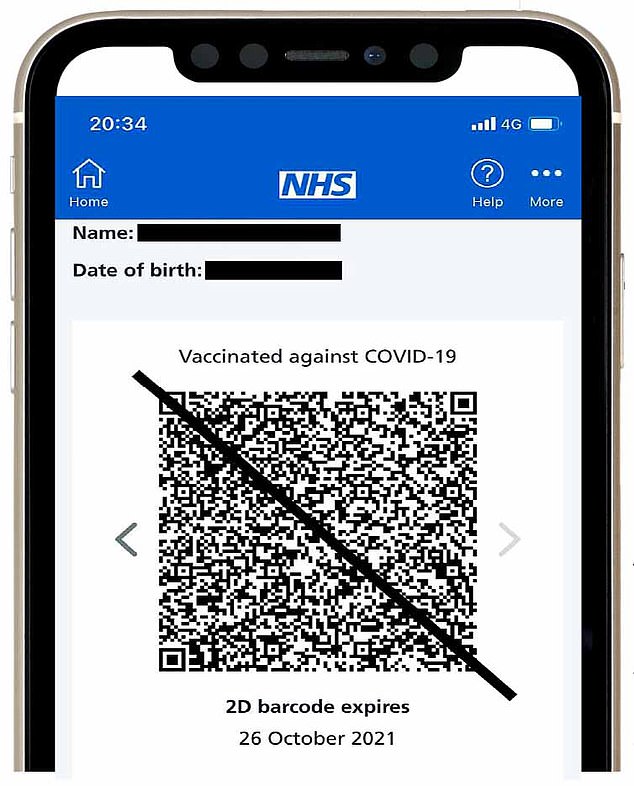 |
 |
 |
 |
DNA / PROTEIN / CELLULAR BASED BIOMETRICS IS COMING.
Capt. Wardrobe Aug - Oct 2021
NOW LOOK AT THIS & READ THE FOLLOWING CAREFULLY
To identify proteins inside different types of brain cells, scientists programmed a virus to deliver an enzyme to a precise location inside the brain of a living mouse. Once delivered, the enzyme, which is derived from soybeans, genetically tags neighboring proteins.
New technology allows scientists to identify proteins inside a living brain
to sum up;
THEY PROGRAMMED A VIRUS TO
TO TAG = PLACING AN INDENTIFIABLE MARKER
THIS COULD BE USED FOR DNA BASED BIOMETRICS
will "HUMANITY" be scanned via your DNA 24 hrs a day?
Here's the full article:
by Brooks Hays Washington DC (UPI) Aug 11, 2021
Scientists can now identify proteins inside the cells of a living brain, a breakthrough that could aid investigations of brain diseases like Parkinson's and Alzheimer's, according to a study published Wednesday in the journal Nature Communications.
Proteins are the lifeblood of cellular biology, as they allow cells to communicate and perform complex functions. But proteins are also infinitely complex, with the brain's cells alone deploying millions of distinct proteins.
To identify proteins inside different types of brain cells, scientists programmed a virus to deliver an enzyme to a precise location inside the brain of a living mouse. Once delivered, the enzyme, which is derived from soybeans, genetically tags neighboring proteins.
When scientists attempted to image the tagged proteins using fluorescence and electron microscopy, they were elated to find images of the target cell's proteome, its full arsenal of proteins.
Using mass spectroscopy, researchers were able to perform a postmortem analysis and identify the various proteins.
"Similar work has been done before in cellular cultures. But cells in a dish do not work the same way they do in a brain, and they don't have the same proteins in the same places doing the same things," senior study author Yevgenia Kozorovitskiy said in a press release.
"It's a lot more challenging to do this work in the complex tissue of a mouse brain. Now we can take that proteomics prowess and put it into more realistic neural circuits with excellent genetic traction," said Kozorovitskiy, associate professor of neurobiology at Northwestern University.
By tagging and imaging the full slate of proteins expressed by a single cell's genome, researchers can gain insights into how proteins work in concert.
In addition to the soybean enzyme, the cell-targeting virus also delivers a green fluorescent protein.
"The virus essentially acts as a message that we deliver," Kozorovitskiy said. "In this case, the message carried this special soybean enzyme. Then, in a separate message, we sent the green fluorescent protein to show us which neurons were tagged. If the neurons are green, then we know the soybean enzyme was expressed in those neurons."
Genetic tagging has led to great advances in the study of DNA and RNA, but scientists have struggled to target and tag proteins.
Genes and RNA can be sequenced and amplified in order to identify a cell's genetic building blocks, but the same techniques don't work for proteins.
"We have been able to gain a lot of traction with genetic and RNA sequencing, but proteins have been out of the loop," Kozorovitskiy said.
"Yet everyone recognizes the importance of proteins. Proteins are the ultimate effectors in our cells. Understanding where proteins are, how they work and how they work relative to each other is really important," Kozorovitskiy said.
Researchers estimate their new technique, mass spectroscopy-based proteomics, will allow neurobiologists to identify the full spectrum of proteins at work along vital brain circuits.
In followup studies, scientists plan to deploy their new protein-tagging technology to study proteome changes in mouse models with neurological diseases.
"We look forward to taking this to models related to brain diseases and connect those studies to postmortem proteomics work in the human brain," Kozorovitskiy said. "It's ready to be applied to those models, and we can't wait to get started."
Imagine a virus released into the population that
places genetic NANO rfid tags in the targeted.
Imagine if it is class or ethno specific?
and the virus delivery system was, let's say; in the water supply.
What would that look like to any decent human being?
YOUR "human DNA IDENTIFIER" will enable a
we really need to ask if
brain protein tagging of Graphene oxide nano RFID is happening via modified Prions (errant brain proteins) produced by Messenger RNA GENE THERAPY.
source: Transport of prion protein across the bloodbrain barrier - May 5 2009
"Our findings support the implication that SARS-CoV-2, or its shed spike proteins circulating in the blood stream, could cause destabilization of the blood-brain barrier in key brain regions," Dr. Ramirez said. "Altered function of this barrier, which normally keeps harmful agents out of the brain, greatly increases the possibility of neuroinvasion by this pathogen, offering an explanation for the neurological manifestations experienced by COVID-19 patients."
which then can deal with future infections by the virus
Vaxxed are now 'the unclean'?
GENETICALLY TAG PROTEINS IN A BRAIN.
New technology allows scientists to identify proteins inside a living brain
"health to belong" behaviour based biosecurity police state
"the results suggesting a neuroprotective role for PrPc (PRIONS)
also raise the question of whether it can cross the BBB
(BLOOD BRAIN BARRIER)
and potentially be used therapeutically."
are supposed to be attacked & destroyed by immune system
What happens then, to the spike proteins created?
Do they become misfolded into PRIONS?
Do they go on to cross the blood brain barrier?
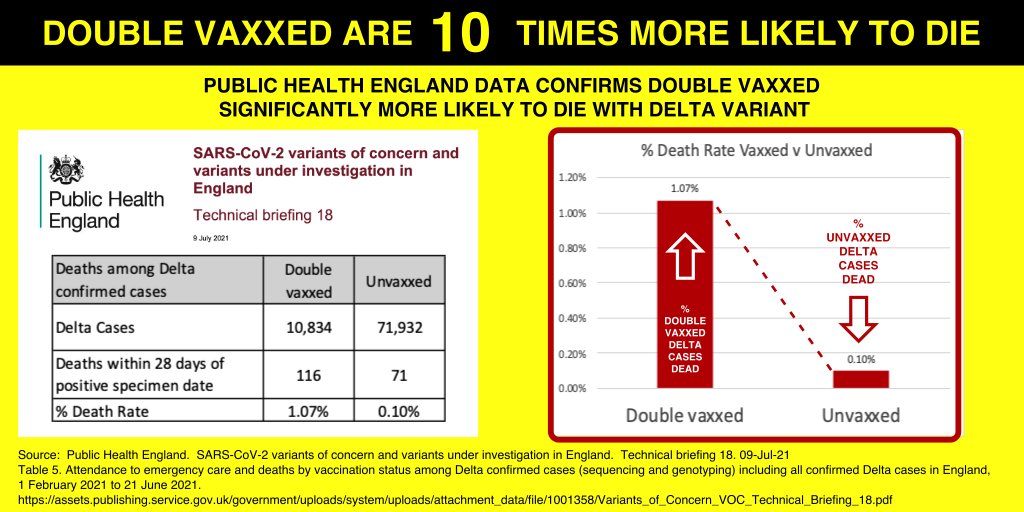
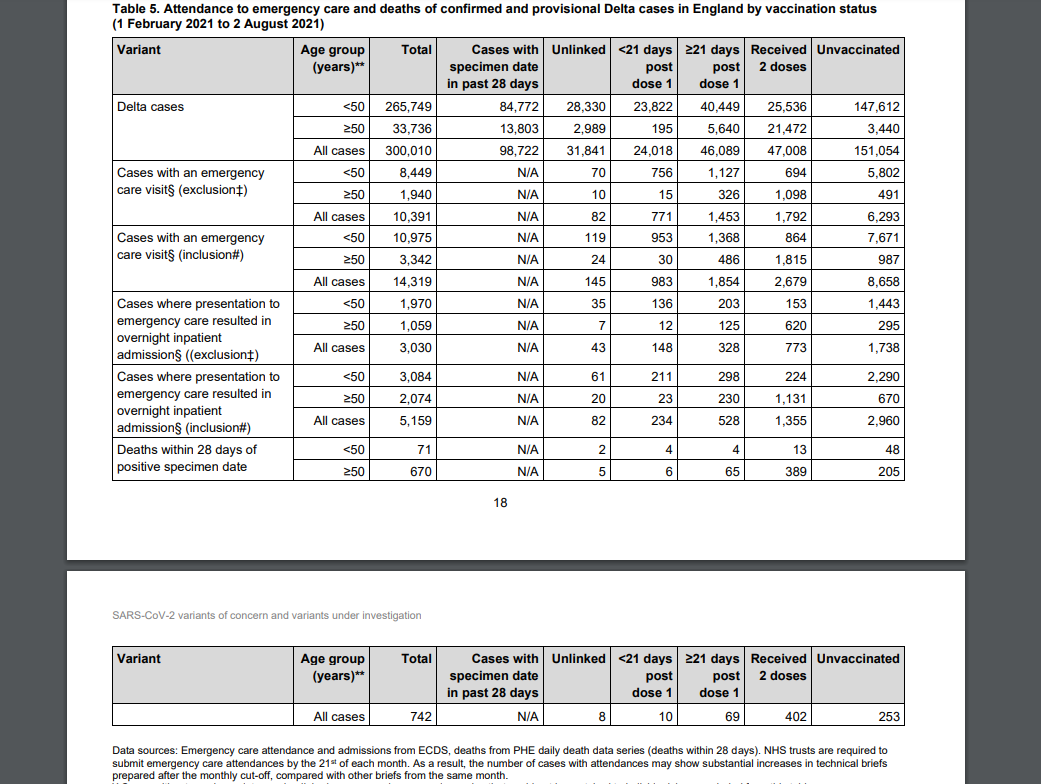
|
The UK government just reported the following data, tucked away in their report on variants of concern:
Less than a third of delta variant deaths are in the unvaccinated.
Let me say that another way - two-thirds of Delta deaths in the UK are in the jabbed.
To be specific:
From the 1st of February to the 2nd of August, the UK recorded 742 Delta deaths (yes, the dreaded Delta has not taken that much life).
Out of the 742 deaths, 402 were fully vaccinated. 79 had received one shot. Only 253 were unvaccinated.
The report is here.
But this is the crucial page (pic left). Look at the bottom line.
Chris Waldburger
|
future scenarios? or happening now?
Vaccines that spread like a disease
can be also used as a bioweapon.
Scientists are working on vaccines that spread like a disease. What could possibly go wrong?
By Filippa Lentzos, Guy Reeves | September 18, 2020
Self-spreading vaccines have some of their roots in efforts to reduce pest populations. Australian researchers described a virally spread immunocontraception, which hijacked the immune systems of infected animalsin this case a non-native mouse species in Australiaand prevented them from fertilizing offspring. The earliest self-spreading vaccine efforts targeted two highly lethal infectious diseases in the European rabbit population (myxoma virus and rabbit hemorrhagic disease virus). In 2001, Spanish researchers field-tested a vaccine in a wild rabbit population living on Isla del Aire, a small Spanish island just off Menorca. The vaccine spread to more than half the 300 rabbits on the island, and the trial was deemed a success.
In 2015, another team of researchers speculated on the development of a self-spreading vaccine for the Ebola virus that could be used on wild great apes like chimpanzees. Since then, scientists have come to see a wide array of animalsfrom wildlife such as bats, birds, and foxes to domesticated animals like dogs, pigs, and sheepas amenable to self-spreading vaccines.
So far, researchers have not developed experimental self-spreading vaccines for humans; there is no clear evidence that anybody is actively working on the technology. Nuismer and Bull argue, rather, that self-spreading vaccines present a revolutionary approach to control emerging infectious diseases before they even spill over from animals into the human population.
Zoonotic spillover is certainly a pressing problem; alongside SARS-CoV-2, HIV, Ebola virus, and the Zika virus, there are over a thousand other new viruses with zoonotic potential that have been detected in wild animals over the last decade. Prevention is better than a cure, Nuismer and Bull say in a New Scientist article. In their Nature Ecology & Evolution article, they claim they are "poised to begin developing self-disseminating vaccines to target a wide range of human pathogens in animals.
behaviour
Outside of an experiment, scientists would face massive technical and practical hurdles in identifying the most appropriate targets for intervention and ensuring immunity is maintained in the wildlife populations. Despite these substantial challenges, the potential security implications of self-spreading vaccines are even more serious.
behaviour
The principal security concern is that of dual-use. In essence, this means that the same research that is used to develop self-spreading vaccines to prevent disease, could also be used to deliberately cause harm. You could, for instance, engineer triggers into a virus that cause immune system failures in infected people or animals, a bit like HIV does naturally. Or you could create triggers in a virus that cause a harmful autoimmune response, where the body starts attacking its own healthy cells and tissues.
behaviour
The bioweapon question. While researchers may intend to make self-spreading vaccines, others could repurpose their science and develop biological weapons. Such a self-spreading weapon may prove uncontrollable and irreversible.
behaviour
We don't have to dig very deep for a historical example of weaponized biology. As the apartheid-era South African biowarfare program shows, social, political, and scientific pressures can lead to the misuse of biological innovation.
behaviour
Codenamed Project Coast, South Africa's program was primarily focused on covert assassination weapons for use against individuals deemed a threat to the racist apartheid government. In addition to producing contraptions to inject poisons, Project Coast researchers developed techniques to lace sugar cubes with salmonella and cigarettes with Bacillus anthracis.
behaviour
While there have been many biowarfare programs, including several that were far more elaborate and sophisticated, the South African program is particularly relevant in thinking through malicious uses of self-spreading vaccines. One of Project Coast's research projects aimed at developing a human anti-fertility vaccine.
behaviour
The idea took hold during a time of widespread concern over worldwide population explosion. Schalk Van Rensburg, who oversaw fertility-related work at a Project Coast laboratory, told South Africa's post-apartheid Truth and Reconciliation Commission, a forum for examining the sordid history of the era and laying the foundation for future peace and tolerance, that he thought the project was in line with the World Health Organization's attempts to curb rising global birth rates. He believed it could bring his lab international acclaim and funding. According to Van Rensburg, Wouter Basson, the director of the biowarfare program, said the military needed an anti-fertility vaccine so that female soldiers would not fall pregnant.
behaviour
While some of the scientists involved in the project denied awareness of ulterior intentions or even that their fertility work was part of a military endeavor, Van Rensburg and Daniel Goosen, a lab director, told the Truth and Reconciliation Commission that the real intention behind the project was to selectively administer the contraceptive in secret to unwitting Black South African women.
behaviour
In the end, the anti-fertility vaccine was not produced before Project Coast was officially closed down in 1995, 12 years after it was initiated. An early version was tested in baboons, but never in humans. South Africa isn't the only country to try and forcibly sterilize parts of its population. European countries, including Sweden and Switzerland, sterilized members of the Roma minority in the early half of the 20th century and some, like Slovakia, continued even beyond that. More recently, analysts have alleged that the Chinese government is sterilizing women in Xinjiang, a province with a large population of Uighur Muslims.
behaviour
It doesn't take a massive leap of the imagination to see how the aims of South Africa's anti-fertility vaccine project would have benefited from research into self-spreading vaccines, particularly if you combine it with current developments in pharmacogenomics, drug development, and personalized medicine. Taken together, these strands of research could help enable ultra-targeted biological warfare.
behaviour
An expanding potential for abuse. The Biological Weapons Convention, the treaty that bans biological weapons, is nearly 50 years old. Negotiated and agreed to in the depths of the Cold War, the convention suffers from outdated modes of operation. There are also significant compliance assessment challenges. The convention certainly didn't stop South Africa from pursuing Project Coast in the early 1980s.
behaviour
Self-spreading vaccine research is a small but growing field. At the moment, about 10 institutions are doing significant work in the area. These laboratories are primarily located in the United States, but some are in Europe and Australia, as well. As the field expands, so does the potential for abuse.
behaviour
So far research has primarily been bankrolled by US government science and health funders like the National Science Foundation, the National Institutes of Health, and the Department of Health and Human Services. Private organizations like the Gates Foundation and academic institutions have also financed projects. Recently, the Defense Advanced Research Projects Agency (DARPA), sometimes thought of as the US military's research and development wing, has gotten involved in the research. The University of California, Davis, for example, is working on a DARPA administered project called Prediction of Spillover Potential and Interventional En Masse Animal Vaccination to Prevent Emerging Pathogen Threats in Current and Future Zones of US Military Operation. According to a pamphlet, the project is "creating the world's first prototype of a self-disseminating vaccine designed to induce a high level of herd immunity (wildlife population level protection) against Lassa virus ¦ and Ebola.
behaviour
Military investment in biological innovation for defensive or protective purposes is permissible under the Biological Weapons Convention, but it can still send the wrong signals. It could cause countries to doubt one another's intentions and lead to tit-for-tat investment in potentially risky research, including in self-spreading vaccines. The result of research gone awry or biowarfare could be catastrophic for health and the environment.
behaviour
At a time when the norm against chemical weapons is degrading, underscored most recently by the poisoning of Russian opposition leader Alexei Navalny with the nerve agent Novichoka crime for which many European officials blame Russiathe international community simply can't afford to have the same thing happen to the norm against the use of biological weapons. It would completely defy the spirit of the treaty if it seemed like states would even want to pursue high-risk dual use activities in biology.
behaviour
Early, open, good-faith conversations about scientific aims and advances that cause particular dual-use concerns, as self-spreading vaccines do, are essential to exploring the broader stakes of certain technical trajectories. The University of California, Davis program is pursuing ways to incorporate an "off switch to safely control the technology. And DARPA says any field experimentation related to the project would follow biosafety protocols. But these pledges won't suffice. Our ambition must be to make a collective decision about the technical pathways we are willing, or not willing, to take as a society.
behaviour
The Bulletin
behaviour
|
The pandemic of coronavirus disease 2019 (COVID-19) has afflicted tens of millions of people, of which over 2.5 million have died from severe respiratory dysfunction and other complications of this disease.1
The etiological agent of COVID-19 is the severe acute respiratory syndrome coronavirus 2 (SARS-CoV-2), which may have first emerged from a zoonotic source to then spread from person to person until global dissemination.1
Current control measures to curb the pandemic, such as national lockdowns, closure of work places and schools, and reduction of international travel, are threatening to draw the world into a global economic recession of unprecedented scale.2
Ending the pandemic will likely require the manufacture of a variety of vaccines to generate the billions of doses required to vaccinate the global population.3
Encouragingly, hundreds of different vaccine development efforts are currently in progress, currently 16 of which have even entered phase III clinical trials.4
,5
Of these candidates, two vaccines have been granted emergency use authorization in several countries based on early phase III results demonstrating nearly 95% protection from developing COVID-19. Both candidates, one from Moderna and the other from Pfizer-BioNTech, mediate immunity by a prime and boost regimen through intramuscular (i.m.) injection of a messenger RNA (mRNA) encoding the SARS-CoV-2 S antigen encased by a lipid nanoparticle (LNP). The use of adjuvants is obviated by the ability of the LNP itself to activate an innate immune response.6
,7
The swift development of these RNA vaccines from design to demonstrated efficacy in humans highlights the advantages of such a system.5
The cell-free, rapidly scalable techniques used to manufacture these vaccines provide an additional advantage.8
Despite these benefits, the need to manufacture the billions of vaccine doses required to immunize the world's population remains a challenging problem.9
This issue is compounded by the need to immunize individuals with two doses of the currently approved vaccines, as a single dose does not elicit robust immunity likely needed for protection.10
, 11
, 12
Although some have demonstrated robust anti-SARS-CoV-2 immunity in a small animal model with a single dose of mRNA vaccine, self-replicating mRNA (replicon) vaccines may offer dual advantages of protective immunity with a single low-dose administration.8
A single-dose vaccine would not only avoid logistics and compliance challenges associated with multi-dose vaccines but also allow vaccination of more individuals with each batch.9
Herein, the immunogenicity of and host response to a self-replicating RNA vaccine using Arcturus' proprietary self-transcribing and replicating RNA (STARR technology) against SARS-CoV-2 was examined. Our findings indicate the added benefit of self-replication in amplifying the immunogenicity of RNA vaccine against COVID-19.
|
|
Competitive advantage': New flu vaccine research a focus for CSL
By Emma Koehnm September 6, 2021
Biotechnology giant CSL will focus on research into new vaccine technologies including mRNA influenza vaccines as it looks to further boost the value of its Seqirus business.
The $139 billion biotech told investors in its full-year report released on Friday that it would double down its research focus into technologies that look set to play a bigger role in the multibillion-dollar influenza market.
This includes cell-based flu vaccines, which use animal cells to grow flu viruses and take less time to make, as well as development of self-amplifying mRNA, the next generation' of the technology used to make the Pfizer and Moderna vaccines.
Locally produced vaccine vials coming off a Melbourne production at CSL's Seqirus earlier this year.
Locally produced vaccine vials coming off a Melbourne production at CSL's Seqirus earlier this year.
The company said that successful innovation in areas like self-amplifying mRNA would deliver competitive advantages, while failure to capitalise on these new technologies would "diminish growth in this product sector.
Seqirus generates just under $US2 billion of CSL's $US9.98 billion in annual revenue, but its growth has been a major bright spot for the company. CSL bought out the Novartis influenza business for $US275 million in 2014 and conducted a swift and successful turnaround.
Revenues in the influenza business jumped 34 per cent due in 2021 due to strong demand for products, but CSL is aware of increasing competition in the flu vaccine space.
Messenger-RNA vaccines have risen in prominence throughout the COVID-19 pandemic and flu vaccines may one day use this technology. Meanwhile, other drugmakers like US firm Novavax are starting to consider the development of combined influenza and coronavirus vaccines.
CSL has been clear it does not intend to make its own COVID-19 vaccine at this stage, but management notes in the annual report that the company will be focusing on research and development to ensure Seqirus and its products keep up.
CSL says its mRNA research may lead to products that are more stable and effective than products already on the market.
"When administered, self-amplifying mRNA has the capacity to replicate (or amplify) itself. As a result, far less mRNA may be required in the vaccine formulation to generate equivalent antigen production and an effective immune response, management explained in its annual report.
CSL spent $US1 billion on research and development in 2021 and this number is set to increase, with the business setting a spending target of between 10 and 11 per cent of annual revenue.
Healius CEO Malcolm Parmenter said revenue was up strong double digits as COVID-19 testing surged during fiscal 2021.
The business has become instrumental in Australia's coronavirus vaccine rollout through its production of 50 million doses of the AstraZeneca vaccine. CSL has been involved in a number of COVID research projects, but the bulk of its R&D program has nothing to do with coronavirus.
A new cell-based influenza facility at Tullamarine and research hub in Melbourne's Parkville biomedical precinct are set to open in the coming years.
The company's research focus goes beyond Australia, with its 1700 scientists scattered across nine countries. A new research and development campus is set to open in Marberg, Germany next year, while the company is also expanding its research centre in California.
CSL chair Brian McNamee said in a letter to investors on Friday that while CSL has not been immune from the coronavirus pandemic, the board has full confidence in the company's ability to grow moving forward.
Chief executive Paul Perreault will receive a total realised remuneration package worth $US45.3 million ($61.25 million) for steering the company through 2021. Long-term incentives which vested during the year make up the majority of these payments, coming in at $US42 million.
Shares closed up 0.1 per cent on Friday to $303.87.
|
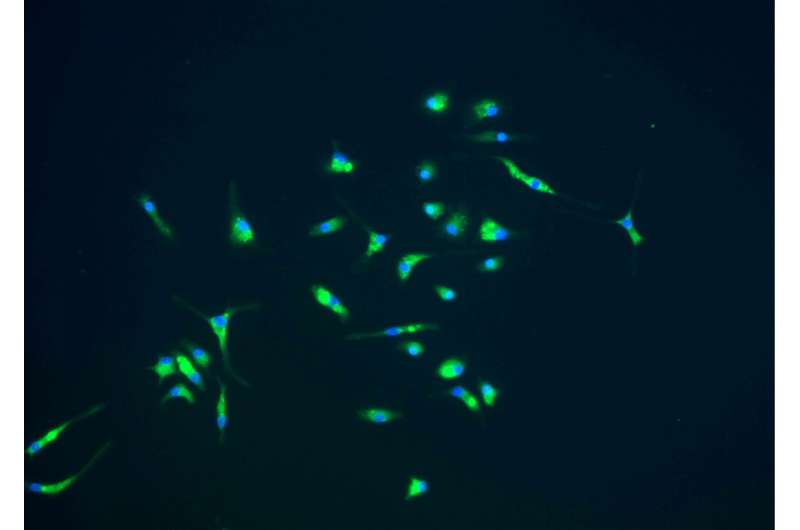 | Prion diseases are slow degenerative brain diseases that occur in people and various other mammals. No vaccines or treatments are available, and these diseases are almost always fatal. Scientists have found little evidence of a protective immune response to prion infections. Further, microgliabrain cells usually involved in the first level of host defense against infections of the brainhave been thought to worsen these diseases by secreting toxic molecules that can damage nerve cells. |
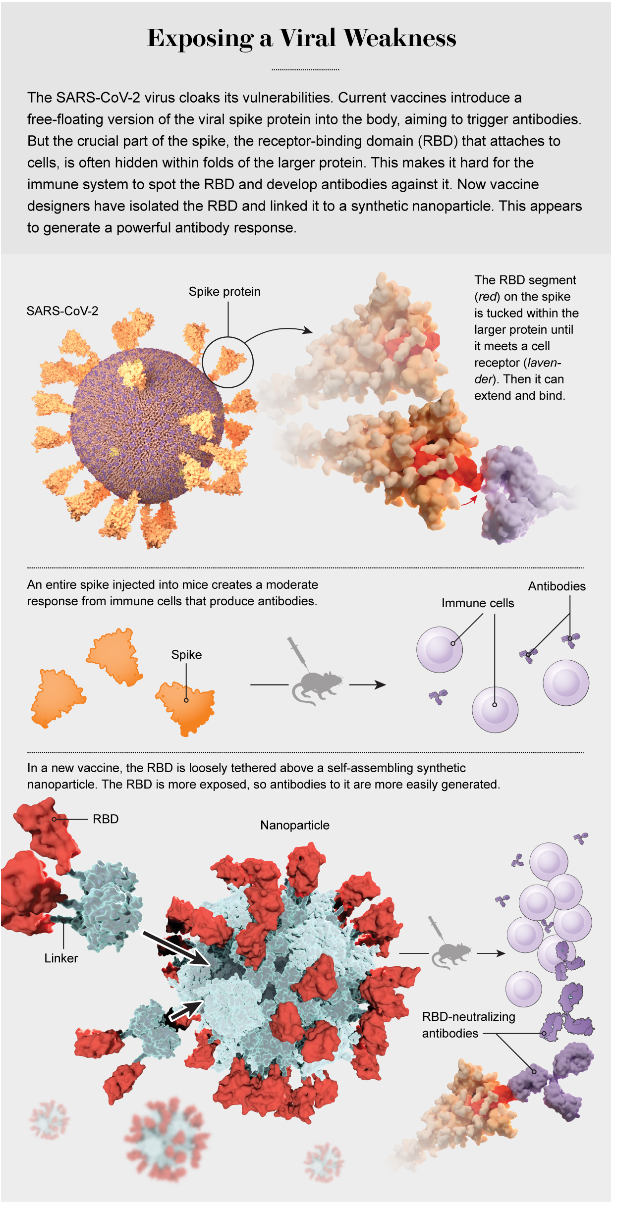 |
Artificial Proteins Never Seen in the Natural World Are Becoming New COVID Vaccines and Medicines
Researchers have begun to crack the code of protein structure, allowing them to remake, well, everything
Late on a Friday night in April 2020, Lexi Walls was alone in her laboratory at the
University of Washington, waiting nervously for the results of the most important
experiment of her life. Walls, a young structural biologist with expertise in
coronaviruses, had spent the past three months working day and night to develop a new kind
of vaccine against the pathogen ravaging the world.
She hoped that her approach, if
successful, might not only tame COVID but also revolutionize the field of vaccinology, putting
us on a path to defeat infectious diseases from flu to HIV. Unlike any vaccine used before, the
vaccine Walls was developing was not derived from components found in nature. It consisted
of artificial microscopic proteins drawn up on a computer, and their creation marked the
beginning of an extraordinary leap in our ability to redesign biology.
Proteins are intricate nanomachines that perform most tasks in living things by constantly
interacting with one another. They digest food, fight invaders, repair damage, sense their
surroundings, carry signals, exert force, help create thoughts, and replicate. They are made of
long strings of simpler molecules called amino acids, and they twist and fold into enormously
complex 3-D structures. Their origamilike shapes are governed by the order and number of
the different aminos used to build them, which have distinct attractive and repellent forces.
The complexity of those interactions is so great and the scale so small (the average cell
contains 42 million proteins) that we have never been able to figure out the rules governing
how they spontaneously and dependably contort from strings to things. Many experts
assumed we never would.
|
|
But new insights and breakthroughs in artificial intelligence are coaxing, or forcing, proteins
to give up their secrets. Scientists are now forging biochemical tools that could transform our
world. With these tools, we can use proteins to build nanobots that can engage infectious
diseases in single-particle combat, or send signals throughout the body, or dismantle toxic
molecules like tiny repo units, or harvest light. We can create biology with purpose.
[snip]
Although there is great optimism about the technology, some biosecurity researchers have expressed concerns about proteins that could be designed for nefarious purposes. Prions, for example, which are responsible for "mad cow and other neurodegenerative diseases, are misfolded proteins that cause other proteins to misfold in turn, triggering deadly chain reactions that are transmissible; they could be delivered by aerosol.
The Biological Weapons Convention, which virtually all nations have signed, effectively bans the development or use of pathogen-based bioweapons, but no one ever thought to extend it to address proteins that were never part of an organism.
"This is a real concern, says biosecurity expert Filippa Lentzos of King's College London, "because potential future biological weapons won't necessarily make us sick using pathogens. Synthetic mini proteins may or may not fall under the control of the convention, she says, "so legal status is an important issue.
|
|
Screenshots from Dr Derek Lovelys talk "Protein nanowires for sensing, energy harvesting & wiring cells to electronics"
|
video Stew Peters & Dr. Carrie Madej Reveal "Living Organism" Inside Covid Vials
|
|
Prion-Based Bioweapons
Transmissible spongiform encephalopahies (TSEs) are diseases caused by prions, which are misfolded proteins devoid of nucleic acids (DNA or RNA), yet still highly infectious. Prions are known to cause fatal neurodegenerative disease and are highly resistant to heat, harsh chemical treatments, and irradiation. Recombinant prions can be bound to other substances in order to be spread through the air, or persist for years in the soil.
Symptoms of infection are a byproduct of brain degeneration, where "spongy holes in brain matter cause sudden personality changes, impaired thinking, difficulty in performing normal functions such as speaking or swallowing, and sudden movements such as twitching or tremors. There are no treatments to halt the progression of TSEs, only to alleviate symptoms as the disease progresses. Fatality rates are described as 100 percent. The most notable TSEs in humans are Creutzfeldt-Jakob disease, kuru, and fatal familial insomnia.
With such a destructive resume, prions appear initially to be a relatively ideal terrorist weapon, except that their incubation periods prior to manifestation of clinical symptoms can take up to 40 years or more. With such an extended latency, the risks associated with handling the infectious particles relative to the immediate effects associated with their dissemination do not add up. In addition, because terrorists traditionally prefer to announce their involvement within a timely manner after an attack, it would be theoretically just as psychologically impactful to institute a hoax event, or to defer to something immediate or broadly recognized by the general population.
|
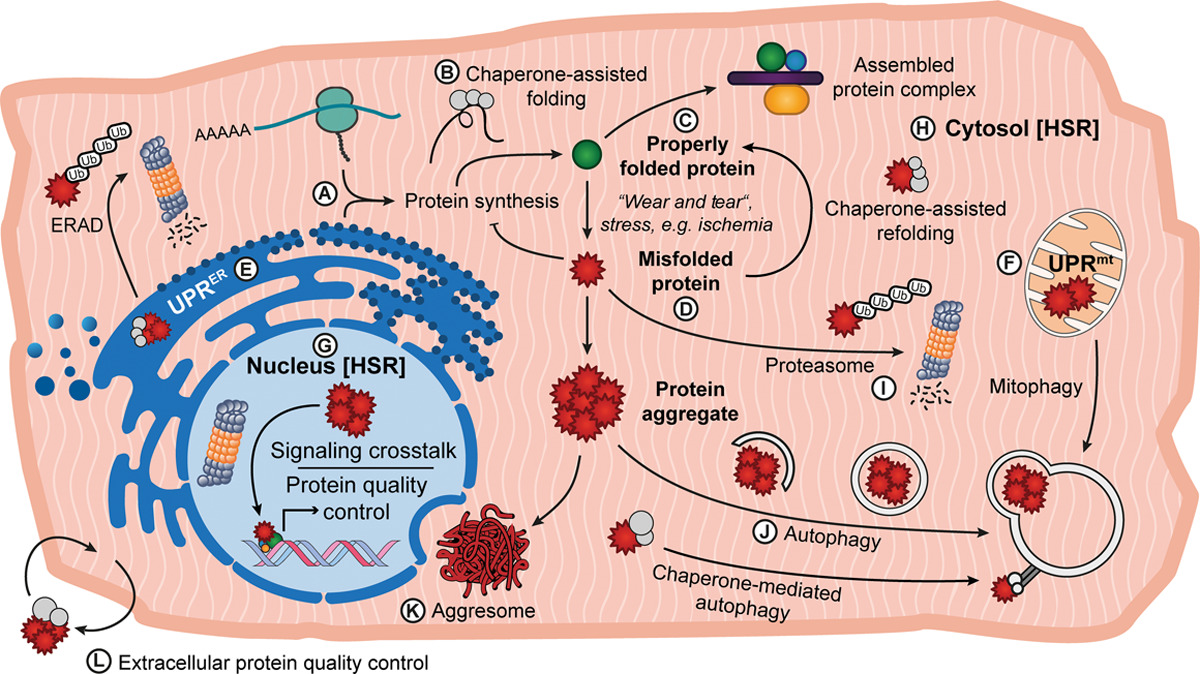
|
What is Proteostasis, What Keeps it Balanced, and Why is this Balance Important?
Protein quality can be compromised by genetically encoded mutations, and by mistakes in transcription or translation, resulting in errors as small as 1 amino acid substitution. This, in turn, can disrupt normal protein folding, intracellular translocation, or function. In addition, disease-related stresses, such as ischemia, can trigger protein misfolding, and unfolding of proteins that were once properly folded and functional, as well.
|
|
Exposed hydrophobic regions of misfolded proteins bind to similar regions in nearby proteins, leading to inappropriate associations and protein aggregation. The aggregating species can continue to bind exposed hydrophobic regions of neighboring proteins and thus have the potential to form stable, both soluble and insoluble, nonfunctional structures.
These protein aggregates interfere with normal cell function in numerous ways, including by disrupting protein complexes, interacting with lipids and membranes, and possibly interfering with contractile function. Protein aggregates can recruit and sequester components of the proteostasis machinery, including chaperones and elements of the ubiquitin and proteasome machinery, presumably to aid in the clearance of the aggregated species, facilitating dysregulated proteostasis and chronic activation of stress responses, which can result in cell death.1 Moreover, whereas most misfolded proteins are prevented from transiting out of the cell, some can be secreted from their cell of origin and deposited in distant tissues. This results in deleterious functional consequences deriving from pathogenic proteins clustering on plasma membranes, altering lipid bilayer fluidity, membrane architecture, and the normal distribution of membrane proteins.
|

|

|
|
A new study by doctors from Johns Hopkins University and Harvard Medical School found that large cells called megakaryocytes may be found in the brain capillaries of individuals who died from COVID-19 infection. Megakaryocytes make platelets part of the body's clotting system and these cells should not be there. In fact, these neuropathologists had never seen megakaryocytes in the brain before, and this observation had never before been reported in the medical literature. These cells could be related to strokes observed in individuals with COVID-19.
Major cognitive effects of COVID
In survivors of intensive care unit (ICU) stays due to acute respiratory failure or shock from any cause, one-third of people show such a profound degree of cognitive impairment that performance on neuropsychological testing is comparable to those with moderate traumatic brain injury.
In daily life, such cognitive effects on memory, attention, and executive function can lead to difficulties managing medications, managing finances, comprehending written materials, and even carrying on conversations with friends and family.
Commonly observed long-term psychological effects of ICU stays include anxiety, depression, and post-traumatic stress disorder (PTSD).
Effects due to COVID ICU stays are expected to be similar a prediction that has already been confirmed by the studies in Britain, Canada, and Finland reviewed above.
|
|
Rare Nerve Syndrome Linked With Johnson & Johnson Vaccine
Yesterday, the FDA issued a warning that the COVID-19 vaccine manufactured by Johnson & Johnson (J&J) can lead to an increased risk of a rare neurological condition known as Guillain-Barré syndrome, which occurs when the immune system damages nerve cells, causing muscle weakness and occasional paralysis. According to The New York Times, the risk of developing the condition is low, with approximately 100 suspected cases identified so far, but the risk appears to be 3 to 5 times higher among those who received the J&J vaccine. Moreover, the FDA said that available evidence suggests an association between the vaccine and the condition, but there remains insufficient evidence to establish a causal link.
|
neuropsychopharmacology?
|
The use of pharmacotherapy to treat psychiatric and neurological disorders has become an increasingly broad and complex part of health care. The complexity of the brain and behavior yield highly specialized areas of study that are then utilized to develop effective pharmacotherapeutic interventions.
Knowledge of the treatment of diseases of the brain and behavior is critical to those treating other disease states due to the impact these disorders and medications can have on overall health.
Neuropsychiatric pharmacotherapy covers important topics in the treatment of psychiatric and neurologic disorders such as schizophrenia, bipolar disorder, major depressive disorder, anxiety disorders, childhood psychiatric disorders, sleep disorders, substance use disorders, dementia and other special topics in the specialty of neuropsychopharmacology.
|
They can Implant entirely false memories
|
|
from 2003
Propranolol, a commonly prescribed beta-blocker, interferes with the neurochemical pathway thought to be responsible for making emotionally arousing events more memorable - the beta-adrenergic system - and it has already been used experimentally in the treatment of patients with PTSD. In one study, published in October, Guillaume Vaiva of the University of Lille and colleagues offered prop- ranolol to victims of assault or motor accidents shortly after their traumatic experience, and then invited them back for psychological testing two months later. On their return, almost all the patients exhibited some symptoms associated with PTSD, but they were twice as severe among those who had not taken the drug.
The finding that propranolol can be effective at blocking memory when given after an event as well as before is important because, as Loftus explains, "In the real world you can't be there to exert your manipulations right at the time an event is happening, but you can get on the scene later." It has been proposed that propranolol should be offered to victims of rape as a standard measure to prevent them developing PTSD. But could it also be used to erase false memories - for instance, "recovered" memories of alien abduction - that nevertheless elicit all the physiological responses associated with harrowing, real memories?
|
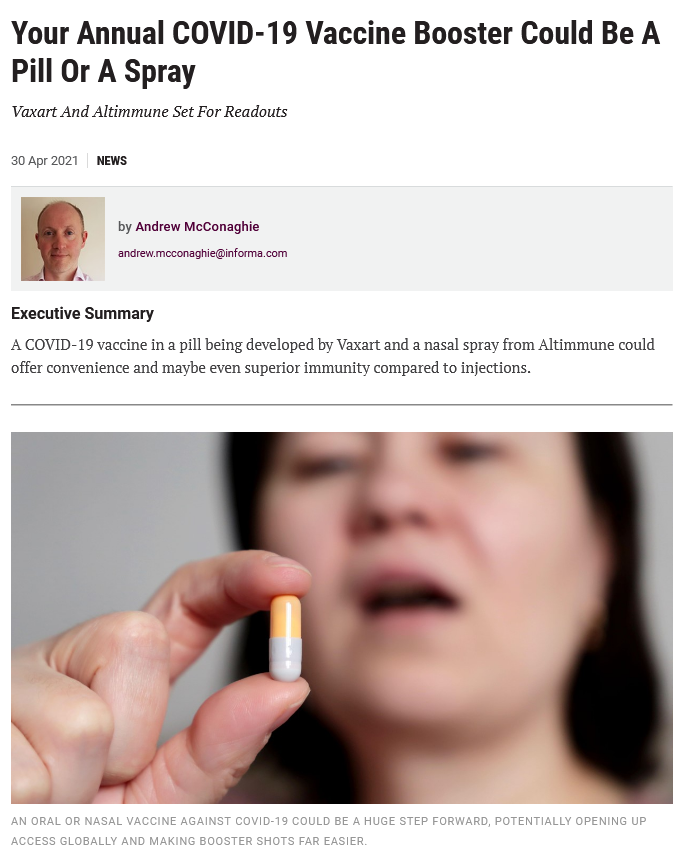 |
Intramuscular injections could be replaced by a pill or a spray,
with several novel candidates now in early to mid-stage development, including oral candidates from Vaxart and ImmunityBio and nasal COVID-19 vaccines from both Altimmune and AstraZeneca's partners Oxford University.
snip
Mucosal Immunity - A Better Barrier To Infection
In addition to convenience, oral and nasal vaccine candidates have other potential advantages in that they elicit immune response in a different way to subcutaneous or intramuscular vaccines.
In subcutaneous or intramuscular vaccines, the primary immune response is systemic humoral immunity, in which B-cells generate antibodies (IgG) against the pathogen in the blood. They tend to produce limited cellular immunity from T-cells, and only weak protection at the mucosal surfaces, which include the nasal cavity and the stomach.
|
|
The reverse is true with oral and nasal vaccines delivering a vaccine via mucosal surfaces generates mucosal antibodies (IgA) as well as a T-cell response, while systemic antibody response (IgG) can be limited.
A vaccine that could provide a mucosal immune response in the nose and mouth is likely to be preferable against an airborne respiratory virus like SARS-CoV2, as it would provide a barrier at the infection site.
|
|
Passive inhaled mRNA vaccination for SARS-Cov-2 Wee Song Yeoa and Qin Xiang Ngb,? Author information Article notes Copyright and License information Disclaimer
Published online 2020 Nov 24. doi: 10.1016/j.mehy.2020.110417 Dear Editor,
The world is currently facing an unprecedented outbreak of the severe acute respiratory syndrome coronavirus 2 (SARS-CoV-2), which causes the Coronavirus Disease 2019 (COVID-19) in humans. At the time of writing, more than 38 million persons have been infected with the virus, with more than a million recorded COVID-related deaths [1]. Scientists are urgently trying to develop a safe and efficacious vaccine for SARS-CoV-2, which must also be produced in large quantities to protect vulnerable populations against SARS-CoV-2.
behaviour
To achieve this, we propose the massive and passive immunization of the at-risk population via cohorting with individuals who have recently contracted SARS-CoV-2, but are deemed non-infectious albeit reverse transcription-polymerase chain reaction (RT-PCR)-positive. Testing RT-PCR positive would imply the continued spread of non-viable mRNA particles into the surroundings [2].
behaviour
Multiple studies have noted that individuals who has had SARS-CoV-2 for more than 10 days were non-infectious, though they remained RT-PCR-positive [3], [4]. The above finding is in line with current US Centers for Disease Control and Prevention (CDC) guidance that "persons with mild to moderate COVID-19 remain infectious no longer than 10 days after symptom onset and persons with "more severe to critical illness or severe immunocompromise likely remain infectious no longer than 20 days after symptom onset [5].
behaviour
Messenger RNA (mRNA) as a means for passive immunization has been extensively studied for years. Early studies since the 1990s showed that exogenous mRNA could direct protein expression in vivo, cementing mRNA as a promising drug platform technology [6], [7]. Several studies later demonstrated the utility of mRNA in vaccine development and conferring protection against cancers [8] and infectious diseases [9], [10]. Moreover, passive mRNA immunization also experiences fewer safety issues due to its non-integrative and transient nature [11], the latter of which contributes to better and/or easier control of protein expression.
behaviour
The potential role of mRNA vaccination in the fight against SARS-CoV-2 is evidenced by ongoing COVID-19 Phase I vaccine trials conducted by several pharmaceutical companies, including Moderna Therapeutics' mRNA-1273 vaccine [12], [13], which has yielding promising results. The feasibility of inhaled RNA for passive transfection has also been proven in a number of studies [14]. On a mechanistic level, the inhaled RNA may lead to passive synthesis of non-infectious spike proteins using cell transfection machinery, hence leading to immunization of the individual.
behaviour
Though there are no conclusive or ongoing large scale clinical studies yet to prove the above hypothesis, we believe this proposal is worth exploring in our battle against COVID-19, given the significant number of already recovered individuals and the natural shedding of nonviable SARS-CoV-2 particles in the environment.
behaviour
source: NCBI
behaviour |
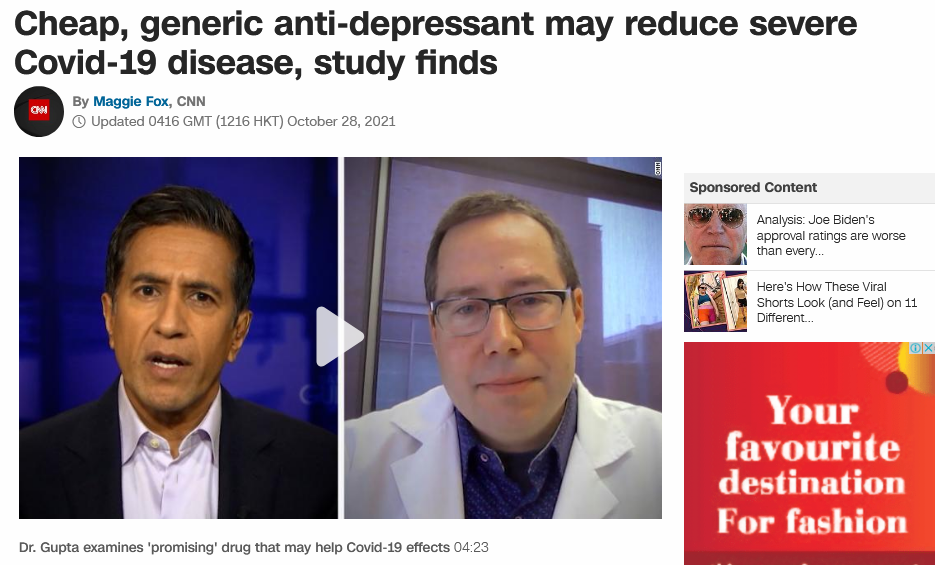
Keep taking this medication even if you feel well. Do not stop taking this medication without consulting your doctor. Some conditions may become worse when this drug is suddenly stopped. Also, you may experience symptoms such as mood swings, headache, tiredness, sleep changes, and brief feelings similar to electric shock. (Web MD) |
(CNN 28th Oct 2021) - A cheap, generically available anti-depressant may reduce the risk of severe Covid-19 disease by close to a third in people at high risk, researchers reported Wednesday.
A trial among about 1,500 patients in Brazil showed those who took the drug, known as fluvoxamine, were less likely to progress to severe disease and to require hospitalization.
The drug, sold under the brand name Luvox, is a selective serotonin reuptake inhibitor (SSRI) most often used to treat obsessive compulsive disorder (OCD) and depression. But it can affect inflammation, said Dr. Angela Reiersen, an associate professor of psychiatry at Washington University in St. Louis who worked on the study, published in The Lancet Global Health.
"Fluvoxamine?may reduce the production of inflammatory molecules called cytokines, that can be triggered by SARS-CoV-2 infection," Reiersen said in a statement. The drug may also reduce blood platelets, which may affect the clotting effects of coronavirus infection.
Reierson and colleagues gave 741 volunteers with Covid-19 100 mg of?fluvoxamine?twice a day for 10 days while 756 volunteers got a placebo.
Among the patients who got fluvoxamine, 79 -- or about 11% -- needed treatment in an ER or hospital room compared to nearly 16% of those given placebos. It was a 5% decrease in absolute risk and a 32% decrease in relative risk.
More study is needed to see if the drug might be added to the treatments given to coronavirus patients, but it's cheap. "A 10-day course of fluvoxamine costs approximately $4 even in well-resourced settings," the researchers wrote.
It's not a cure, but if the drug can help keep patients out of the hospital, it would be useful.
|
|
"Given fluvoxamine's safety, tolerability, ease of use, low cost, and widespread availability, these findings might influence national and international guidelines on the clinical management of COVID-19," they concluded.
A related drug, Prozac, or fluoxetine, is also cheap and even more widely available, and the researchers said this drug should be studied to see if it might help.
"It is now crucial to establish whether a class effect exists and whether these drugs can be used interchangeably for COVID-19," they wrote.
It wasn't a perfect study, they noted. It was done in Brazil, and the patients had a higher rate of hospitalization than
Covid-19 patients in other clinical trials.
"There is no standard of care that exists for early treatment of COVID-19 and various advocacy groups promote different interventions, including some of those evaluated in this and our previous trials. Furthermore, there is little understanding of who is at greatest risk of disease progression from this disease as some patients with numerous risk factors do recover quickly whereas some others with less established risk factors might not," they wrote.
|
 |
They have been pre-programming you...
from the TV series Brave New World 2020
|
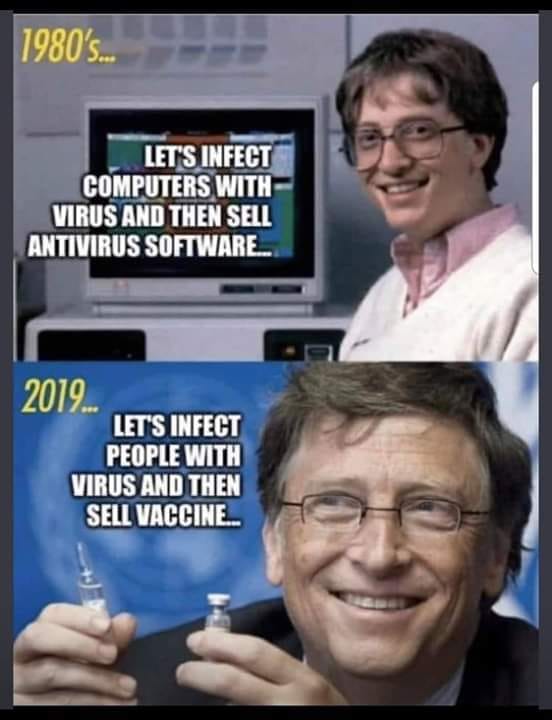
|
A nefarious Vaccine program could introduce Genetic tagging into the population as a nano biometric ID program as an in Vivo Vaccine Passport to monitor & control freedom of movement / access to goods / services
Once an acceptable level in vaccine uptake has been achieved, Mandatory Pills / Sprays are introduced into a co-erced majority. These pills are labelled & sold as booster treatments to keep the virus variants at bay...Primarily this will be a way to normalise the concept of management of acceptable health status, & will be cost effective in terms of drug production & delivery.
An ever present threat would be necessary to fix the public into a state of continual upgrade culture, (previously indoctrinated into the global consumer by way of the Computer Operating System Industry see: Gates)
but, in reality they are smart pills - They release propopanol to 'block' memories, instill obedience & the qwell any ability to maintain critical thought, or exert disobedience & dissent.
see also Wake Up dopey
|
|
|
CIVIL DISOBEDIENCE MOSCOVITE STYLE.
(post by Jeronimo)
"How to defeat vax'x passports without leaving home."
How Russian citizens crushed Moscow's dumb vac'cine passports in just 3 weeks
|
|
Excerpt:
Here's how they crushed Mayor Sobyanin's vac'cine passport and it was pretty simple. Moscow residents simply stopped frequenting any business that required a vac'cine passport.
The really beautiful thing about this was that the vac'cinated people stood in solidarity with the unvaccinated. Business trickled to near zero at all establishments where the vac'cine passport was required.
Moscow residents let their hair grow out, skipped going to bars and restaurants, didn't go to the movies, didn't stay in hotels or do anything else that required a vac'cine passport.
Business owners from all over the city were suddenly calling Mayor Sobyanin's office to chew his ear off about the vac'cine passports. They were going broke, and they were mad as hell about it.
Marina Zemskova, the head of a regional hotel and restaurant association in Russia, said the vac'cine passport turned out to be worse for business than a full lockdown. At least if there was another lockdown, she notes, businesses "could count on some kind of government support measures.-
There's no government support coming under a vac'cine passport system. What the not-very-elite elites failed to anticipate about Moscow residents was they would simply not participate in the scam at all.
The business owners were so infuriated with the mayor that Sobyanin made a sudden, surprise announcement on 19 July that nobody needs to use a vac'cine passport anymore. He made up a hilarious excuse, claiming that Co'vid case rates were all better suddenly, as the reason for lifting the QR code passports.
But everyone knew the truth. Moscow residents decided that their medical privacy and their right to travel is more important than whatever the people in charge were telling them.
It was a massive case of civil disobedience and they didn't even have to go outside and set things on fire in a big protest. All they did was say, "Any business that wants to see a vac'cine passport from me is not getting any of my money.-
That's how you do it."
|
...Be seeing you!
- July / August 2021New
Computer says NO!
New
Be seeing you...
The surveillence state is going nano nano!
New
Welcome to the
21st Century - age of neo-eugenics - round up of the Bio-gEN industry
New
Delta Variant new wave rinse & repeat
The PCR / Vaccine merry go round?
New
One-State Health Spying / Graphene...and the coming Robotnik quantum brain - Minde Kontrolle is global

|